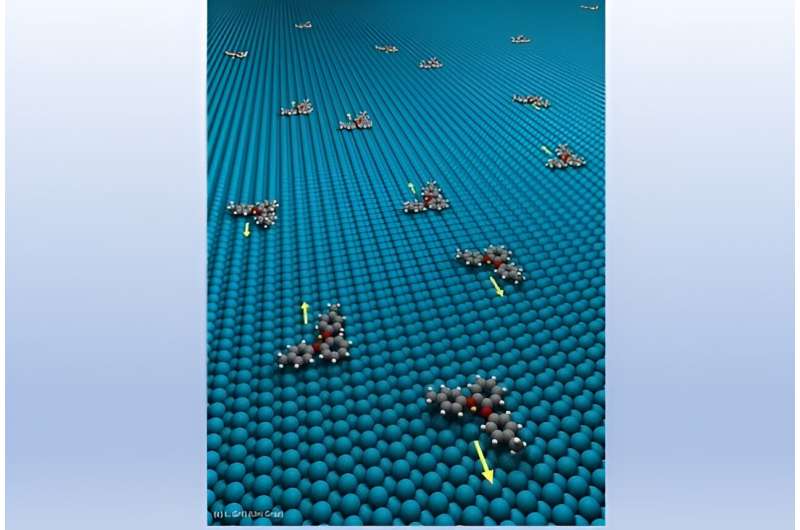This article has been reviewed according to Science X's editorial process and policies. Editors have highlighted the following attributes while ensuring the content's credibility:
fact-checked
peer-reviewed publication
trusted source
proofread
Novel molecular motor moves with uni-directionality in straight line

A University of Liverpool researcher has contributed to new research that demonstrates a completely novel type of molecular motor.
In a paper, "Adsorbate motors for uni-directional translation and transport," published in Nature, a research team show a new molecular motor that moves with perfect uni-directionality along an atomically defined straight line.
Emeritus Professor Mats Persson, from the University's Department of Chemistry, provided the theoretical calculations to the study which is led by the University of Graz.
Molecular motors are molecules that are capable of converting external energy into directional motion. It is an exciting area of research which was recognized by the 2016 Nobel prize for Chemistry.
The University of Graz research team discovered such motor molecules and have developed the concept further. To achieve motor function, they combined the molecules with a surface to form "adsorbate motors." Accordingly, the molecules have a very simple chemical structure in contrast to existing types of molecular motors which require complex synthesis methods.
When excited by an internal molecular vibration, the molecules move with remarkable 100% uni-directionality as followed at the single-molecule level by scanning tunneling microscopy.
The study did not observe a single backward motion in thousands of experiments. This directionality is intrinsic to the adsorbate motor and pushing or pulling by the atomically sharp tip of the microscope is not required.
The calculations by Professor Persson calculations revealed that it is the switching between two potential energy surfaces that causes the uni-directionality.
Professor Persson said, "Uni-directional molecular motion is not only fascinating, but also a counter-intuitive concept in fundamental physics and chemistry and holds great promise for future applications in molecular motors and nanomachines."
Beyond molecular motion, the researchers think this novel motor can do real work by transporting single CO molecules as cargo from one place on the surface to another—always in a perfectly uni-directional manner. An estimation of the delivered quantity of work shows notable agreement with the work done by biological motors.
More information: Grant J. Simpson et al, Adsorbate motors for unidirectional translation and transport, Nature (2023). DOI: 10.1038/s41586-023-06384-y
Leo Gross et al, Surface interaction propels molecule forwards, Nature (2023). DOI: 10.1038/d41586-023-02565-x , https://www.nature.com/articles/d41586-023-02565-x
Journal information: Nature
Provided by University of Liverpool





















